What is Cc and Bcc, and how to use them with customer support?
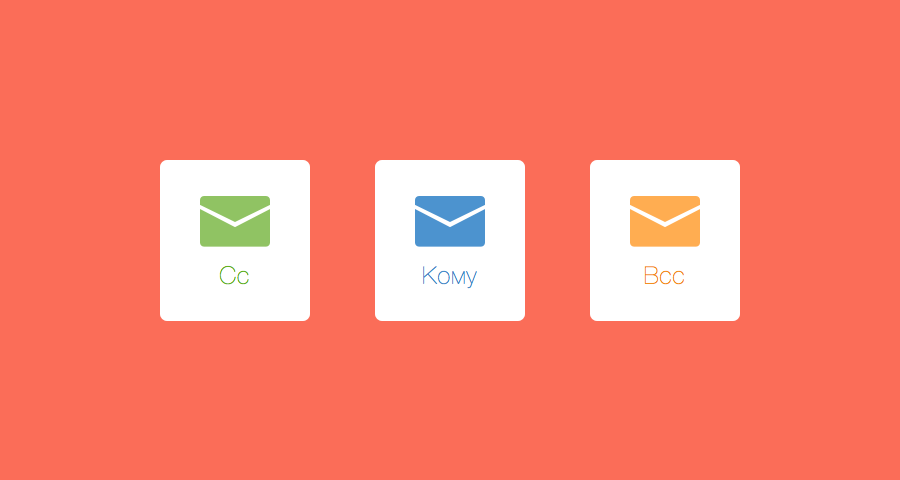
If you actively use mail when communicating with clients and colleagues, a rare day goes without copies. They are an integral part of working correspondence. Therefore, many customers, moving to Omnidesq with good old mail, often asked for support for Cc and Bcc. Before the appearance of this functionality, we received 47 (!) Requests to add it. The figure is impressive, because, at best, 5-7% of those who want to write about their needs and questions.
Before we get into the details of our implementation of copies, let's see what they are.
')
Types of email recipients
To : (to whom ) is the primary recipient of the letter.
Cc : ( copy, carbon copy ) - secondary recipients of the letter to whom the copy is sent. They see and know about each other.
Bcc : ( blind carbon copy ) - hidden mail recipients whose addresses are not shown to other recipients.
Copy usage examples
but. The user asked for help and asked to send replies to both work and personal mail. You specify his personal address in the copy (Cc) so that he can answer from any address and see all the correspondence in each of them.
b. The client paid for consulting / support / development, and you regularly communicate with his staff. You add it to a copy (Cc), so that it receives all your answers, could at any time break into correspondence and assess the quality of the services you provide.
at. The manager wants to monitor support conversations with VIP clients. In the appeals from these clients, the manager is added to the hidden copy (Bcc) so that he always receives your answers (with the history of correspondence).
The beauty is that the client does not know about “shadowing”, and the manager can answer you personally and, for example, make a comment :)
The client contacts you to discuss how to get discounts and payment methods. He immediately adds his accountant to the copy (Cc) so that he can follow the communication and take over the baton at the right time.
How do we implement copy support?
The examples above describe only some of the scenarios that customers “sold” to us, arguing that copies should be supported on the service. We implemented all the standard moments, but did not forget to add some useful chips. Consider everything in order.
Basic functionality
1) To the right of the “Recipient” field name, we have placed two links for adding copies - “Cc” and “Bcc”.
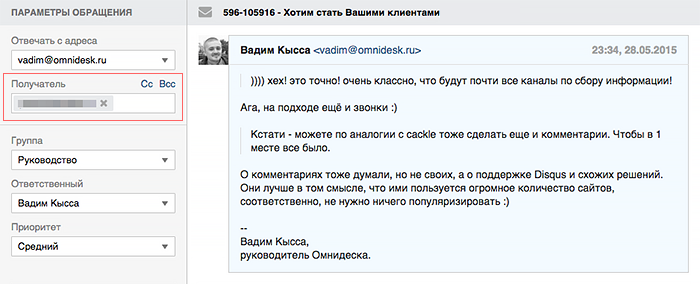
2) When you click on “Cc”, the “Copy” field appears, and the “Cc” link disappears.
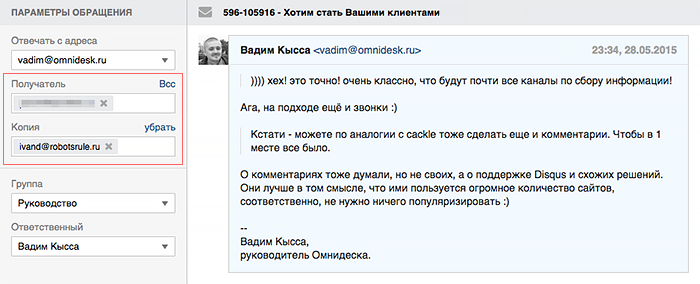
3) When clicking on “Bcc”, the “BCC” field appears, and the “Bcc” link disappears.

4) If you click on the “remove” link, the field disappears, and the link “Cc” / “Bcc” returns to its place (to the right of the field name “Recipient”).
5) When an employee adds an address to a regular copy (Cc) , his response is sent to the main address from the Recipient field and to the address from the Cc field. In this case, both users see that the letter was delivered to two addresses. Each of them can answer both the employee and the employee + to another user.
6) When an employee adds an address to a hidden copy (Bcc) , his answer is sent to the main address from the Recipient field and to the address from the Bcc field. In this case, the main user sees that the letter came only to him, so his answer can only be sent to the employee.
At the same time, the user from the hidden copy sees who the main recipient was and can send a letter to both the employee and the employee + to the main recipient.
7) Copy support works in the opposite direction. If the user sends a request (or a new response to the current correspondence) and adds another address to Cc, we automatically register this address in the "Cc" field so that when the employee responds, a letter is sent to both addresses.
Useful chips
8) All changes in the fields “Recipient”, “Copy” and “Bcc” are recorded in the history of actions.
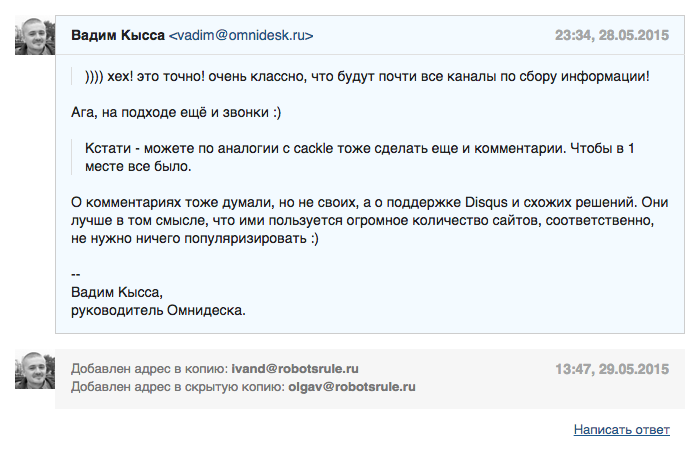
9) For each appeal, we remember all the addresses that were specified in the fields "Recipient", "Copy" and "Bcc". Therefore, after removing the address from the field, you can easily return it. Just click in the required field, and we will offer to select the address from the drop-down list.

10) When a user from a hidden copy responds to an employee and the primary user, his letter is added to the message as a normal response. If he answers only to the employee, then his letter is added to the appeal as a note that is not visible to the main user (when viewing correspondence on the appeal in his account).
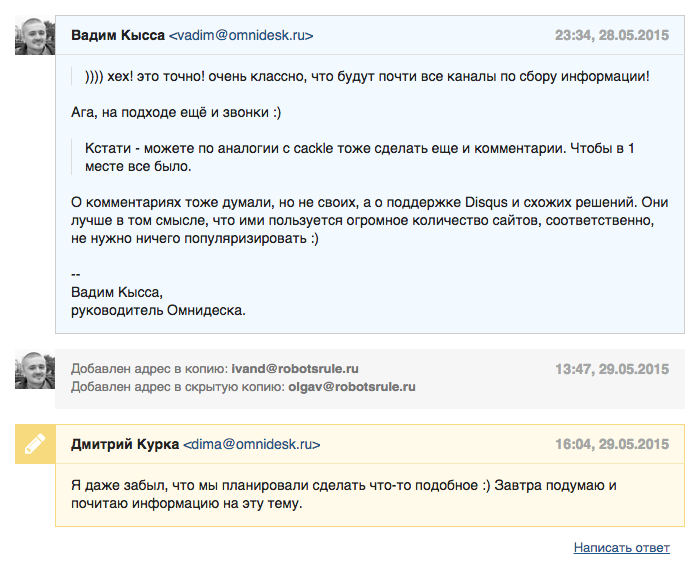
11) In the rules for incoming calls, we added the “Copy (Cc) request” condition so that we can track the presence of a specific address (or domain) in the copy and automatically perform the necessary actions.
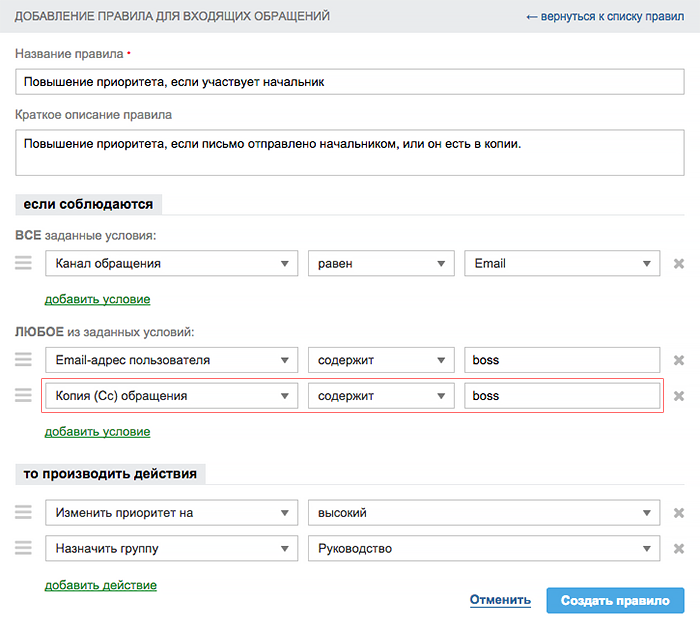
12) In all types of rules, two new actions appeared - “Add to copy” and “Add to hidden copy” in case you need to add addresses to the copy when the appeal meets the conditions of the rule.

These are such useful copies. If you have not used them before, now you will definitely start :)
Source: https://habr.com/ru/post/291080/
All Articles